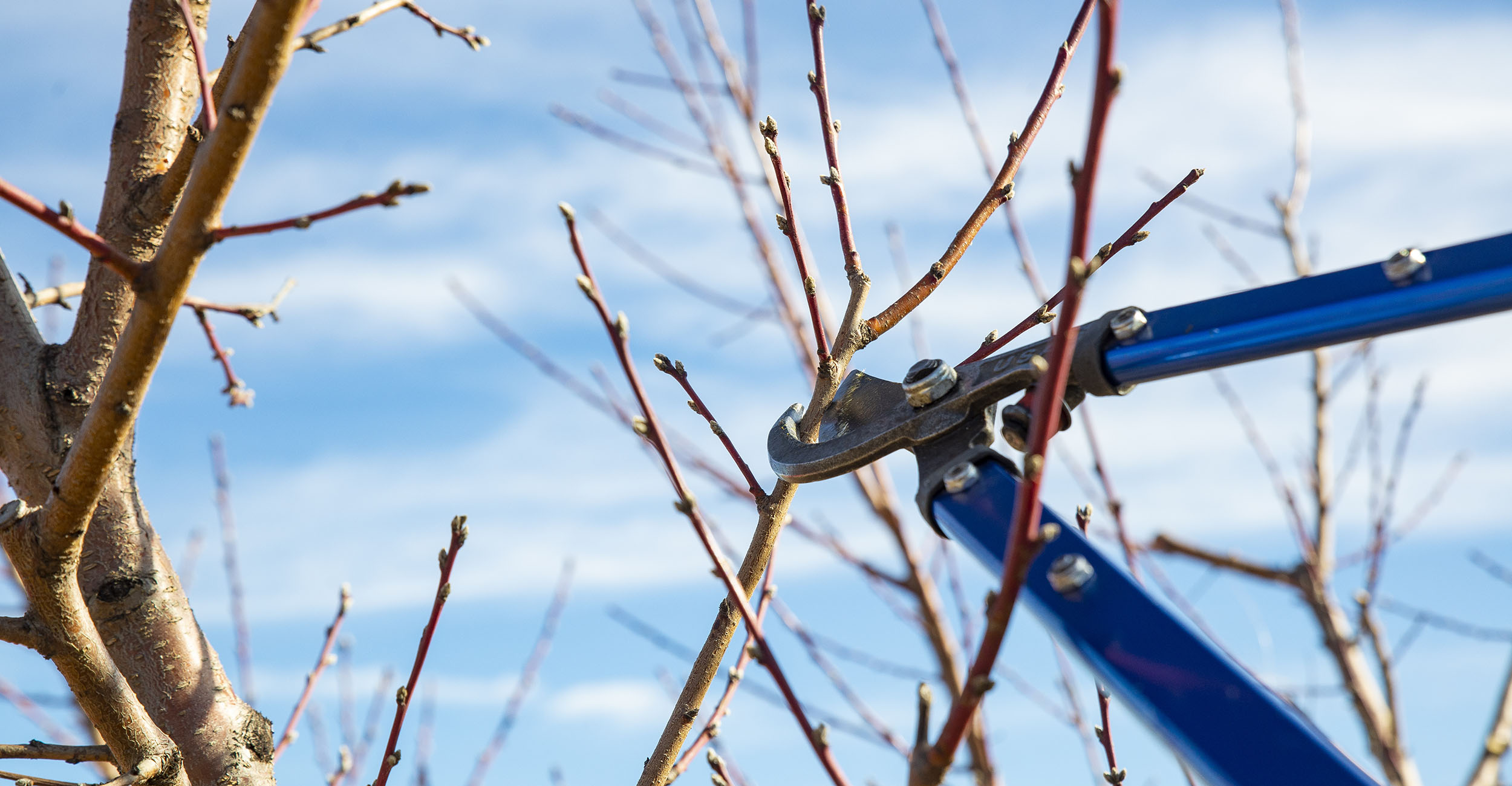
Stop before you lop – a quick guide to winter pruning
Monday, February 14, 2022
Media Contact: Trisha Gedon | Communications Specialist | 405-744-3625 | trisha.gedon@okstate.edu
To prune or not to prune? That is the question. When Oklahoma experiences warmer weather in the winter months, homeowners may want to take advantage of the milder temperatures and get a head start pruning trees and shrubs in the landscape.
The purpose of pruning is to maintain the intended purpose of the plants in the landscape, improve plant appearance and protect people and property. For security purposes, prune shrubs or tree branches that obscure entry to the home.
“Pruning is an important part of landscape care but approach those chores with caution,” said David Hillock, Oklahoma State University Extension consumer horticulturist. “Before rushing out into the yard with a pole saw or lopping shears in hand, it’s important to know what trees and shrubs can be pruned now and what needs to wait several more weeks, or even until the fall.”
The late dormant season is the best time to prune most deciduous trees and shrubs. Pruning late in the winter minimizes the time wounds are exposed before the sealing process begins and can help avoid certain disease and health problems.
There are a variety of pruning implements available, and the right tool makes the job much easier. Pruning tools include pruning shears, lopping shears, hedge shears, hand saws, pole saws and chain saws. Always wear protective clothing as well as eye protection when working on a pruning project.
Hillock suggests remembering the three Ds when pruning – damage, disease and dead material. One of the greatest benefits of pruning in the late winter is it’s easier to make good pruning decisions since there aren’t any leaves obscuring the branch structure.
“Trees and shrubs grown for their spring flowers, such as forsythia, crabapple and flowering dogwood, should be pruned after they flower,” he said. “Pruning now would remove many of the flower buds that were formed last year and reduce the display of flowers in the spring and into the summer.”
Damaged limbs should be removed as they can pose a safety risk. The wound site from a damaged limb also can act as an entry point for disease. Removing damaged limbs and making a clean cut will help the tree wound seal quicker. If a tree is beyond pruning, have it taken down, which may call for professional assistance.
“Don’t be afraid of hurting the tree or shrub by removing damaged or dead material. Depending on what caused the limb to die or become damaged, homeowners could be removing a possible source of further insect or disease agent,” Hillock said. “Destroy any diseased materials. Don’t compost them. Also, remember to clean the pruning tools between cuts when pruning diseased trees.”
Homeowners should not take it upon themselves to prune trees around electrical and utility wires. Contact a utility company or city maintenance workers for assistance.
Homeowners with rose bushes just need to step back for a few more weeks. Now isn’t the time to prune rose bushes. Casey Hentges, host of OSU Agriculture’s television show, Oklahoma Gardening, offers tips for pruning roses in this segment of the program.
In another episode of Oklahoma Gardening, Mark Bays, urban forestry coordinator with the Oklahoma Forestry Services, discusses how to prune trees, different cutting techniques and the variety of cutting implements available.
OSU Extension also offers more gardening information online.
